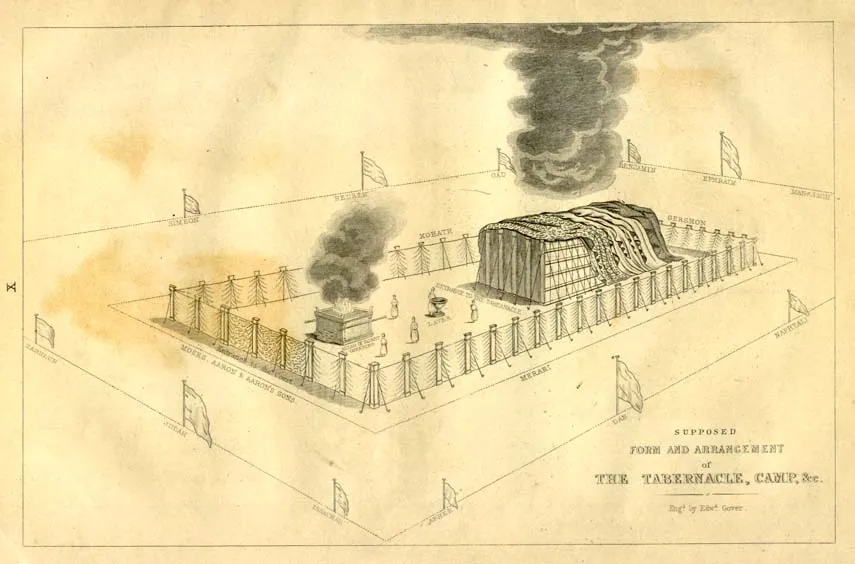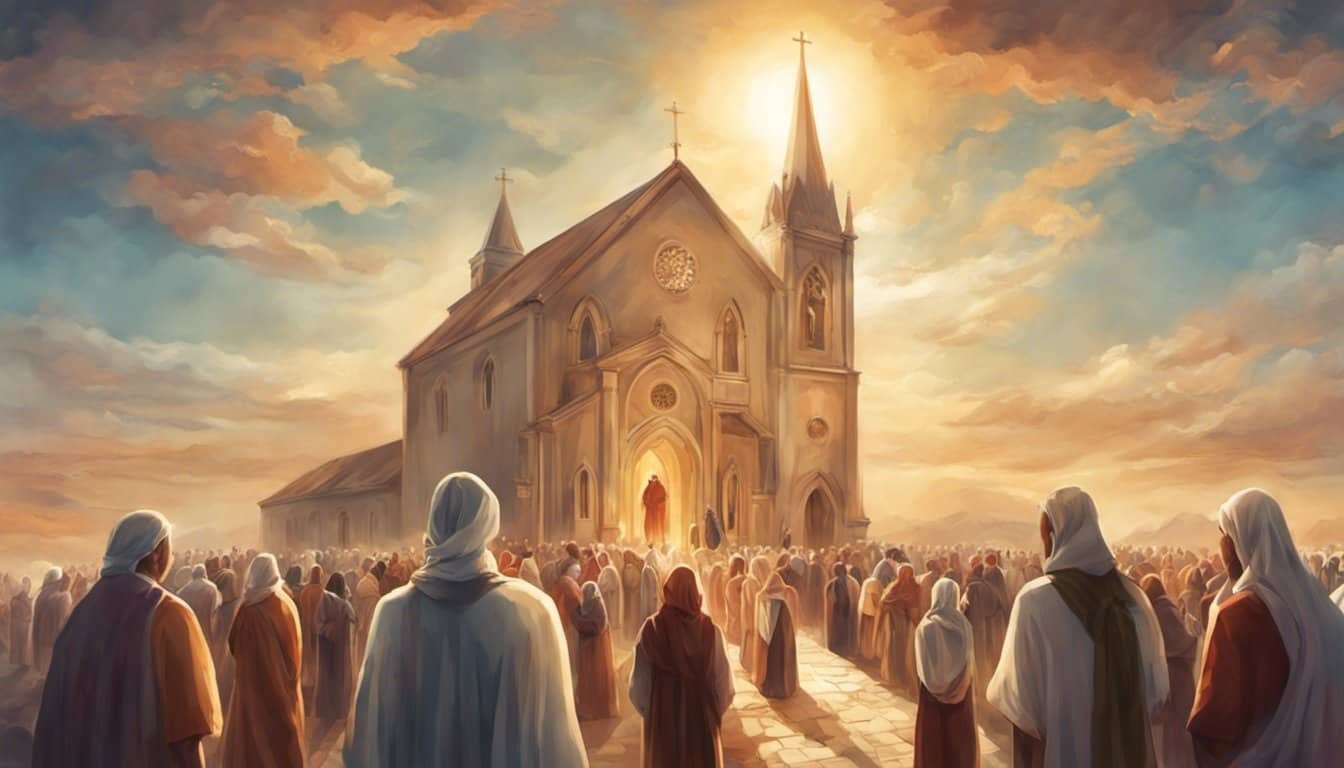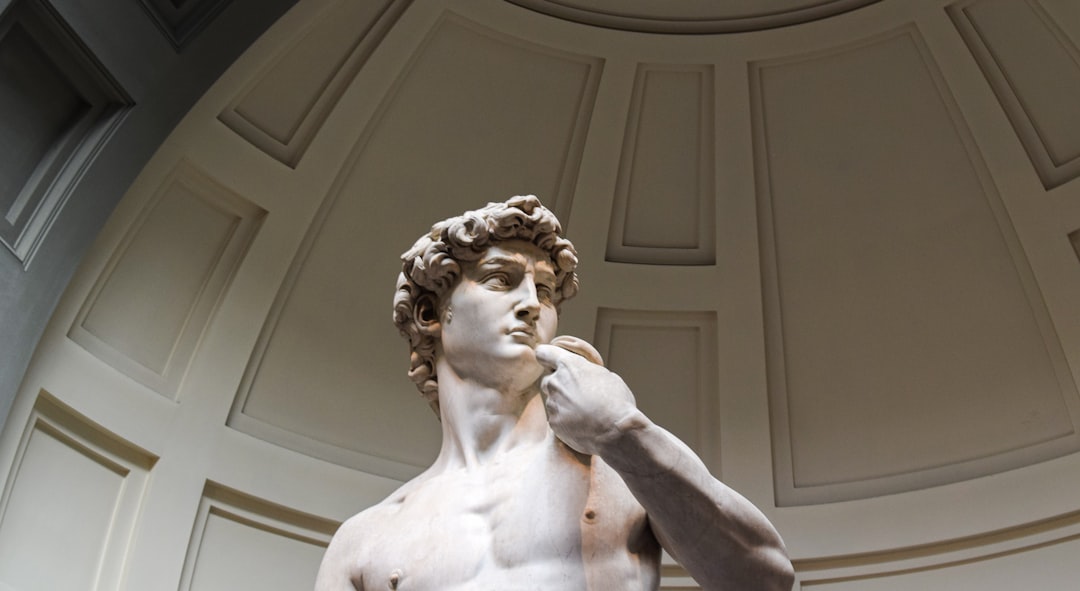The worship of God as depicted throughout the Bible has always been a crucial element for God’s people to remain in His presence. In the Old Testament, the Tabernacle of David played a crucial role in the spiritual life of Israelites. It was a place of worship where King David and priests led the people in songs and praise. However, have you ever wondered what the significance of the Tabernacle of David was, or how it still influences worship today? In this blog post, we’ll explore the history and significance of David’s Tabernacle, chart its relationship with worship and temple in Jerusalem, and discover why it still holds relevance for modern Christian worship.
The Significance of the Tabernacle of David in the Bible
Have you ever heard of the Tabernacle of David? This structure is mentioned in the Bible in both the Old and New Testaments, but many people are not familiar with its significance. Here are a few key points to help you understand the importance of the Tabernacle of David in Biblical worship:
David’s Tabernacle was a place of prophetic worship.
Unlike the Tabernacle of Moses or the Temple in Jerusalem, which had strict regulations and protocols, the Tabernacle of David was a more relaxed and open space for worship. David and his musicians would sing and play instruments before the Lord, often in spontaneous and prophetic ways. This style of worship was a reflection of the deep relationship that David had with God, and it has inspired generations of worshippers to seek after God in a similar way.The Tabernacle of David was a symbol of the Davidic dynasty.
Davidic worship was not only a matter of personal devotion; it was also a political statement. David was the king of Israel, and his dynasty was intended to reign forever. By establishing a separate tabernacle for worship, David was expressing his commitment to God’s sovereignty and his desire to lead the nation in righteous worship. Later kings would follow in David’s footsteps, seeking to honor God through music and song.The Tabernacle of David represents a shift from the Levitical priesthood to spiritual worship.
One of the most significant aspects of the Tabernacle of David is that it was open to all people, regardless of their tribe or status. This was a departure from the Levitical system, in which only the priests could enter the Holy of Holies and offer sacrifices. David’s approach to worship emphasized the spiritual nature of worship and the importance of the heart over outward rituals.The Tabernacle of David is a prophetic symbol of the Messianic kingdom.
Finally, the Tabernacle of David has significant prophetic implications. In Amos 9:11-12, God promises to restore the fallen tent of David, and this restoration would ultimately be fulfilled in the coming of the Messiah. Jesus Christ, as a descendant of David, fulfills the promise of a permanent and righteous kingdom, in which all people are invited to worship God freely and without fear. This vision of an inclusive and spiritual worship is at the heart of what David’s Tabernacle represented.

As you can see, the Tabernacle of David is a rich and complex symbol of Biblical worship. Its significance stretches from the Old Testament to the New, and its implications for our understanding of God’s kingdom are profound. As we seek to grow in our own worship and understanding of God, may we look to David’s Tabernacle as an inspiration and guide for our own journey.
Understanding David’s Tabernacle in the Old Testament

When we think of the Tabernacle in the Bible, we often think of the Tent of Meeting or the Tabernacle of Moses. However, there is another tabernacle that is often overlooked – the Tabernacle of David.
What was the Tabernacle of David? It was a tent-like structure that King David constructed to house the Ark of the Covenant. Unlike the Tabernacle of Moses, the Tabernacle of David did not have the outer court or the holy of holies. Instead, it had one room that housed the Ark of the Covenant.
David’s Tabernacle was not just a physical structure but a symbol of his heart for God. David loved worship and often danced before the Lord with all his might. He understood the importance of music and praised God with the harp and lyre. In fact, David wrote many of the psalms that we still sing today.
The Tabernacle of David played a vital role in Israelite history. It was a sign of the Davidic Covenant, which promised that a descendant of David would sit on the throne forever. This covenant was fulfilled with the coming of Jesus Christ, who is from the line of David.
The Tabernacle of David also represented prophetic worship. It was a place where the 24/7 worship of God was established. This type of worship is prophetic because it symbolizes what is happening in heaven.
The significance of David’s Tabernacle can also be seen in its connection to the Temple in Jerusalem. After David’s death, his son Solomon built the Temple in Jerusalem, and the Ark of the Covenant was transferred there. However, even though the Tabernacle of David was no longer standing, the spirit of worship that it represented continued. The Levitical priests who served in the Temple would sing the psalms of David and play the same instruments.
In conclusion, the Tabernacle of David was a powerful symbol of worship and the Davidic dynasty. It represented the heart of David and the longing for the presence of God. As Christians, we can learn from David’s heart for worship and strive to worship God in spirit and in truth, just as David did.
The Relationship Between the Tabernacle of David and the Temple in Jerusalem
When we study the Tabernacle of David, it’s important to understand its relationship with the Temple in Jerusalem.
First, let’s talk about the Temple. The Temple was built by King Solomon, David’s son. It was considered the center of religious life in Israel and was the only place where sacrifices could be made. Inside was the “Holy of Holies,” the innermost room that held the Ark of the Covenant.
David’s Tabernacle, on the other hand, was a tent that David set up in Jerusalem to house the Ark of the Covenant. It was a portable structure, not a permanent building like the Temple. David’s Tabernacle also had a different purpose than the Temple. It was a place for worship and musical praise, with musicians and singers continually offering up songs and prayers to God.

So how are the two related? The Tabernacle of David actually predated the Temple and was a precursor to it in many ways. David’s desire to bring the Ark to Jerusalem and build a place for worship was a forerunner to the Temple, which was a more permanent structure. Additionally, the worship style that David established in his Tabernacle influenced the worship that took place in the Temple.
One notable example of this is the use of musical worship. David’s Tabernacle placed a strong emphasis on music, with David himself being a skilled musician. The Temple continued this tradition, with musicians and singers forming a prominent part of Temple worship. In fact, many of the Psalms were written by David and other musicians specifically for use in worship, and they were often sung by the Levitical choir in the Temple.
Despite the differences in purpose and structure, the Tabernacle of David and the Temple in Jerusalem are both important parts of Israelite history and legacy. They also have prophetic significance in the Bible, with the Tabernacle of David being connected to the Davidic Covenant and messianic prophecy.
Overall, the relationship between the Tabernacle of David and the Temple in Jerusalem is one of continuity and development. David’s Tabernacle laid the foundation for the Temple, while the worship style established in the Tabernacle continued to influence worship in the Temple and beyond.
The Significance of Davidic Worship in the New Testament
As we delve deeper into the topic of the Tabernacle of David and its role in biblical worship, it is crucial to understand the significance of Davidic worship in the New Testament. Davidic worship is closely connected to the coming of the Messiah and the establishment of the Kingdom of God.
In the New Testament, we see several references to Davidic worship and its prophetic fulfillment in the person of Jesus Christ. For instance, in Acts 15:16-17, James the apostle quotes Amos 9:11-12 to show that the rebuilding of the Tabernacle of David symbolizes the inclusion of the Gentiles in the Kingdom of God through faith in Jesus Christ.
Furthermore, the Gospel of Matthew highlights how Jesus is the fulfillment of the Davidic covenant and the promised Messiah who will sit on the throne of David forever. In Matthew 1:1, Jesus is introduced as the “son of David,” and in Matthew 21:9, the crowds acclaim Jesus as the “Son of David” during his triumphal entry into Jerusalem.
The connection between Davidic worship and the New Testament is further underscored by the use of Davidic psalms in the early Christian Church. The book of Psalms, which includes many psalms written by David, was used extensively in early Christian worship as a means of praising and worshiping God.
Moreover, in the book of Revelation, we see a vision of worship in heaven that is deeply rooted in the prophetic symbolism of the Tabernacle of David. In Revelation 3:7-13, Jesus promises to make those who overcome pillars in the spiritual house of David, highlighting the eternal significance of Davidic worship and its connection to the Messiah.
In conclusion, the significance of Davidic worship in the New Testament cannot be overstated. Through the life, death, and resurrection of Jesus Christ, the prophetic symbolism of the Tabernacle of David finds its ultimate fulfillment and establishes the Kingdom of God forever. As we continue to explore the implications of Davidic worship, let us remember the magnitude of what God has done through the reign of King David and the lineage of the Messiah.

The Connection Between David’s Tabernacle and Messianic Prophecy
When we think of David, we tend to think of him as the great king of Israel who slew Goliath and united the tribes. However, David’s significance is deeper than that. He was a man after God’s own heart and a prophet in his own right. David’s tabernacle was not just a place of worship – it was a prophetic declaration of the coming Messiah.
Here are five clues that suggest the connection between David’s tabernacle and Messianic prophecy:
The ark of the testimony: David’s tabernacle housed the ark of the testimony, which held the tablets of the Ten Commandments. It was a symbol of God’s presence and holiness. The New Testament identifies Jesus himself as the ultimate fulfillment of the law and the presence of God on earth.
The Levitical priesthood: The priesthood that served in David’s tabernacle was made up of Levites, who were descended from Aaron. By the time of Jesus, the priesthood had become corrupt and was operating in a self-serving manner. Jesus fulfilled the role of both king and priest, offering himself as the ultimate sacrifice for sins.
The holy of holies: In the tabernacle of David, the holy of holies was not separated by a curtain. This is significant because when Jesus died on the cross, the curtain in the temple was torn in two, symbolizing the end of the old covenant and the beginning of the new.
The Davidic covenant: God promised David in 2 Samuel 7 that someone from his house would reign on his throne forever. Jesus was the ultimate fulfillment of this promise, as he is descended from the house of David.
The prophetic psalms: Many of the psalms that David wrote contain prophetic language that foreshadows the coming of the Messiah. For example, Psalm 22 describes the crucifixion in detail, despite being written hundreds of years before it happened.
Understanding the connection between David’s tabernacle and Messianic prophecy helps us to see the rich history and meaning behind Old Testament worship. It also foreshadows the coming of Jesus, who is our ultimate high priest and king. As we seek to worship and follow him, we can look to David’s worship as an example of heartfelt praise and devotion to God.
The Revival of Davidic Worship and Implications for Modern Christian Worship
As the study of the Tabernacle of David continues to gain popularity, many Christians are beginning to explore the implications of Davidic worship for modern-day worship practices.

Davidic worship emphasizes the importance of musical worship, specifically through the use of the harp and lyre. This musical worship is believed to be connected to the reign of King David, who was known for his love of music and his ability to minister to God through song.
For many Christians, the revival of Davidic worship represents a return to a more authentic, biblical form of worship that focuses on the presence of God rather than on human performances or rituals. It is seen as a way to break free from the formalism and tradition that can sometimes prevent us from truly connecting with God during worship.
Additionally, the revival of Davidic worship has important implications for the Church’s understanding of the Kingdom of God. As we learn to worship in the way that David did, we can begin to see the reign of King Jesus more clearly and understand our role in advancing the Kingdom on earth.
In the New Testament, we see the connection between Davidic worship and the prophetic fulfillment of the Messiah, Jesus. The spiritual house of David is restored through the Messianic lineage of Jesus, making us a part of the same covenant that David had with God.
Ultimately, the revival of Davidic worship is not just about musical style or historical accuracy – it is about recognizing the significance of worship as a means of drawing near to God and connecting with His Kingdom. As we seek to understand David’s Tabernacle in the Old Testament and its connection to the Temple in Jerusalem, we can begin to see how these ancient practices still hold relevance for us today.

As you explore the implications of Davidic worship for modern Christian worship, consider how this revival can help us draw closer to God and participate in His Kingdom on earth. Through this revival, we may just find a deeper sense of connection and purpose in our worship, as well as a greater understanding of God’s plan for our lives and the world around us.














